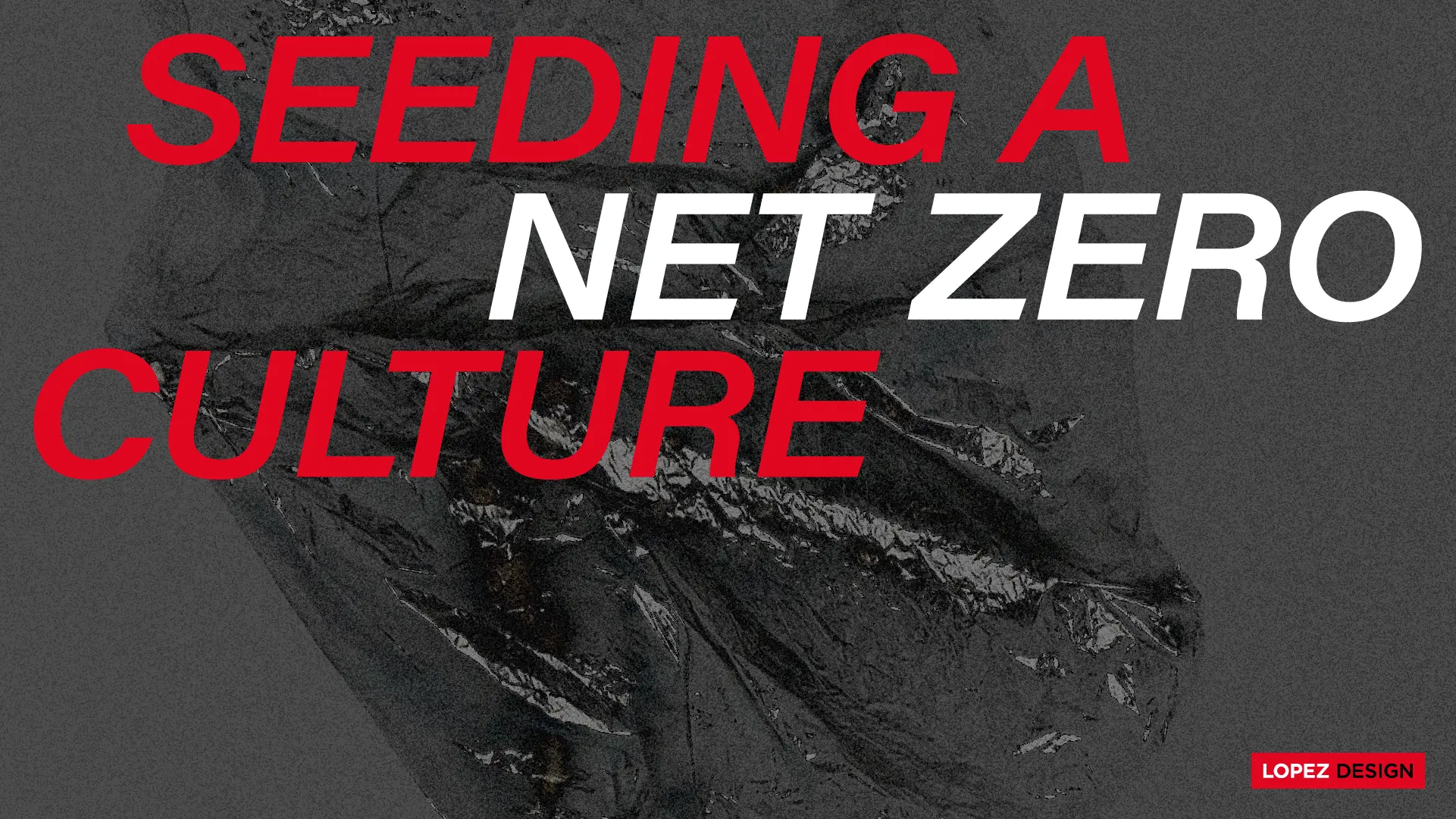Seeding a Net Zero Culture

Achieving Net Zero needs 100% commitment from governments and industries. But what about business and people? The world today is powered by economy and transformation to a cleaner planet means planning the survival of all economic sectors. In real terms, this means redesigning, reusing and recycling while maintaining environmental standards and reinventing how we actually live, work and play.
It is clear then that Net Zero commitments cannot be met without transforming a country's policies and practices. ‘Every drop makes an ocean’ is the need of the hour. Thereby, businesses have a greater responsibility and role to play towards the worldwide pledge of countries for a net zero carbon economy. An organization’s actions towards their resources, processes, infrastructure, value chain, employee culture, product and services will influence market shifts and broaden awareness.
But how can this actually get shaped? Here’s where design becomes the director. But let’s take a step back first.
What is Net Zero?
The UN says, “put simply, net zero means cutting greenhouse gas emissions to as close to zero as possible, with any remaining emissions re-absorbed from the atmosphere, by oceans and forests for instance.” In all, achieving net zero emissions means balancing the carbon we put into the atmosphere versus what’s absorbed from it. Look a little deeper, and this means minimizing waste to minimize pollution. But then, we are at the stage where just optimization is not good enough. We need to actively work towards saving the planet.
Seed and build a Net Zero culture
Firstly, the Net Zero policy should extend to everyone across everything. There is a lot of hush around net-zero, right from policies, interventions, tax reforms, and campaigns directed at businesses. However, to drive it truthfully, this transition must be driven by ‘people’ — by leaders, early adopters and influencers through the culture they shape and the actions they take.
India can achieve better results
While industry-specific policies are the very foundation to get to the goal, we will achieve significant impact if Net Zero becomes a cultural practice. In India, 200 years of British rule followed by years of poverty and health issues made us a frugal society. As a nation, our people have deep-entrenched values of no-waste, reuse and recycling. Our older traditions are deeply rooted through generations in an organic way of life.
We need to leverage our inherent traditions and beliefs, extending them to let people directly benefit from Net Zero contribution. Let a percentage of CF tradeoffs get distributed to people working in organizations and see the change. Being the second most populous country, India should leapfrog into mass transport by building last-mile seamless connectivity and by flattening the status divide. Policies and higher taxes need to discourage individual vehicle ownership and use. These are difficult to achieve unless the government and institutions invest equally in a net-zero culture.
Participatory value
Sustainable practice must necessarily bring value to business and that’s when we will see a sizable change. As per a Harvard Business Review article Making Sustainability Profitable from 2013* businesses do one of three things: one, invest in expensive equipment and processes to turn things around; two, take a boot-strap approach by small initial savings that eventually led to efficient production; three, spread their business model to their vendors, partners and customers. In all, it was found that becoming sustainable does pay and it’s not a trade off as one may suspect.
All business entities should contribute towards carbon footprint points and all individuals working can contribute through their work and personal life. Encouraging individuals to make contributions part of their IT returns will show up a measurable transformation.
Make GenZ the drivers
GenZ has no dearth of eco-warriors. This is the generation with the highest anxiety for environmental issues — 37%** rank climate change as their number one personal concern. GenZ is also the generation with the capacity and drive to be proactive, given its age-advantage and alignment with technology. The younger generation has the ability to live the change they want to see, being both flexible and determined. Greta Thunberg walked the talk with her spirited activism when she went vegan and refused to fly. Thunberg has many times challenged that hers is the generation that will bear the brunt of what past generations have done to the environment.
As per an **EY article, 77% of GenZ would like environmental literacy taught at school. 82% of young people who participated in EY Climate Ideation Clinics are better equipped to understand the role of business in climate emergencies. Young people across the UK, Italy, Netherlands, the US and Singapore have generated ideas in these Clinics.
Turning the world around
At the core of climate change policies is behavioral change, and driving that requires consistent and holistic engagement. An active design policy would help to bring these ideas to fruition, as well as to disperse communications across the social bandwidth to engage with people and summon greater participation.
Written by Anthony Lopez
This article reaches out to company CEOs, Government officials, Environmental Organizations, Recycling and Waste Management companies, Anti-pollution policy makers, Industry experts & consultants, Environmental educators, GenZ eco-warriors.
Reference articles:
Related Projects
Nestaway Homes
BRAND STRATEGY + IDENTITY + PRINT + PACKAGING + UI&UX + SPACE
VIP Branding
BRAND STRATEGY + BRAND IDENTITY
Join our mailing list
Receive our periodic newsletter on Branding, Experience, and Design thinking.
More Articles
Differentiate and Lead with Design
A Visual-Wordplay
Follow us on
Insights
Follow Us
© 2025 Lopez Design Pvt. Ltd. All rights reserved



